TOKENIZATION
HOW YOUR INVESTMENT WORKS
Our combined return is made up of the following factors
• Rental income
• Increase in the value of the property
• interest
• Participation in further investments by the property owner

HOW YOUR INVESTMENT WORKS
As a customer, you receive partial ownership of the property of your choice - according to the amount of your investment. Your investment relates exclusively to the property, while our return is made up of various factors. Property owners turn to us to generate new capital through the tokenization of their properties, which they can invest further in a targeted manner - for example, to obtain funds for investments in start-ups.
Example: If you invest USD 5,000, you will receive 5,000 tokens in return, which represent your ownership rights. You thus become part owner of the property to the value of USD 5,000. With the term progresses and your total assets grow, we distribute outstanding tokens to you every Sunday. At the end of the term, you will have your 5,000 tokens + the number corresponding to your return
Our combined return is made up of the following factors
• Rental income
• Increase in the value of the property
• interest
• Participation in further investments by the property owner


YOUR CHOICE AT THE END OF THE TERM
At the end of the term, you have the choice of keeping your tokens and continuing to hold your partial ownership or realizing your profits and exchanging the tokens for money. You can either continue to invest your balance or have it paid out.
If you decide to continue investing, all you have to do is select a property. When you cash out, you exchange the tokens for your balance. All processes are fully automated and the system guides you through every step.
It is also possible to invest or withdraw only part of your balance.

Tokenization uses blockchain technology to securitize assets, bringing benefits such as increased liquidity, faster settlement, reduced transaction costs and improved risk management.
• Through fractionalized ownership, tokenization enables large and/or historically illiquid assets to be traded by regular investors
• Regulated digital asset exchanges are global, 24/7, more accessible, cheaper, faster and easier to use than traditional markets
• Blockchain technology ensures security, transparency and proof of ownership in tokenized asset investments
• Token market volumes are estimated to reach US$28 billion by 2027 – a projected 62% compound annual growth rate

What is tokenization?
Tokenization is the process of creating and issuing digital tokens on a blockchain to represent units of ownership of an asset.
Any asset can be tokenized: physical or digital, tangible or intangible. From traditional securities such as stocks and bonds, to artwork, precious metals, assets such as intellectual property rights, and, of course, real estate.
Tokenization allows for fractional ownership of assets that would be impractical in traditional markets. This opens up a broader potential investor base and democratizes the market for high value assets.
The benefits of tokenization
By its very nature, blockchain is global and always available, providing a 24/7 worldwide marketplace that ensures greater liquidity, faster settlement and fair pricing.
Smart contracts and distributed ledger technology (DLT) provide security, transparency, immutability and proof of ownership for tokenized assets. Intermediaries are eliminated, reducing transaction costs.
Security Token
A security token is a blockchain-based instrument which represents investment in and/or ownership of an external asset, like a traditional security but in digital form.
• Security tokens inherit blockchain benefits such as transparency, instant settlement and 24/7 availability
• There are three main types of security token: equity, debt and asset-backed
• As security tokens act like traditional securities this allows governments to apply the same regulations
• New legal frameworks are facilitating security token trading on regulated exchanges
The compliant side of cryptocurrency
Blockchain technology supports the creation and distribution of multiple types of tokens. While the blockchain itself treats these token types as nearly identical, their function and intended use determine how they are viewed and regulated by authorities.
Bitcoin was the first blockchain-based token, representing a payment token or “pure” cryptocurrency designed to replace the use of the sovereign currencies we are all familiar with.
This was followed by the Ethereum blockchain, which sought to improve upon the functionality of bitcoin by adding features such as smart contracts. Ether is the utility token of this ecosystem and must be spent to access its features and services.
In the ensuing ICO (initial coin offering) boom, a flood of copycat “coins” were created, some of which had little actual utility and were sold simply as speculative investments.
As such, many were later deemed to be mis-sold (and unregulated) securities and faced hefty penalties. As a result, the earliest “security tokens” had the label attached to them against their will and often with no real product to show for it.
However, more recent projects have embraced the opportunity and increased legitimacy of working with the authorities to create token offerings that comply with securities regulations, and the true security token was born.


